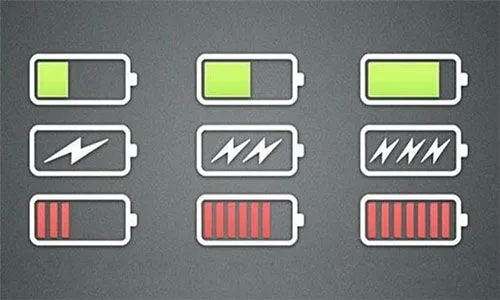The Principle Of Lithium-ion Battery Charging
Lithium-ion batteries rely on lithium ions moving between positive and negative electrodes. During the charging and discharging process, Li+ is embedded and de-embedded back and forth between the two electrodes: When charging, Li+ is de-embedded from the positive electrode, and embedded into the negative electrode through the electrolyte, which is in a lithium-rich state; The opposite is true when discharging.
Lithium-ion battery charging principle
The working principle of lithium-ion battery means its charging and discharging principle. When charging the battery, lithium ions are generated at the positive electrode of the battery, and the generated lithium ions move through the electrolyte to the negative electrode.
The carbon as the negative electrode is in the form of a layer structure, which has many micro-pores, and the lithium ions that reach the negative electrode are embedded in the micro-pores of the carbon layer, and the more lithium ions are embedded, the higher the charging capacity.
By the same token, when the battery is discharged (i.e., the process we use the battery), the lithium ions embedded in the carbon layer of the negative electrode come out and move back to the positive electrode. The more lithium ions that return to the positive electrode, the higher the discharge capacity. What we usually call the battery capacity refers to the discharge capacity.
Lithium-ion batteries generally require the charging process to be controlled in four stages: trickle charge (low voltage pre-charge), constant current charge, constant voltage charge, and charge termination.
When there is no charge management chip pens to the lithium-ion battery on the power charge, the lithium-ion battery in the case of low power, the jolt into the high current, will lead to damage to the lithium-ion battery, because the current is high, the heat is also fast, the battery life will become shorter.
The basic requirement for charging lithium-ion batteries is a specific charging current and charging voltage, thus ensuring safe battery charging. Lithium-ion battery charging method is limited voltage constant current, are controlled by IC chip.
What is the charging current of lithium-ion batteries?
Lithium-ion batteries generally accept a maximum charge current of 1C or less, and laptop batteries have a maximum charge rate of 0.9C. The so-called 1C charging rate refers to the capacity of 1 times the current to charge, charging time of 1 hour. In fact, for a long battery life, it takes 10 to 4 hours to charge at 0.1 to 0.3C.
The national standard stipulates that the charging current of a lithium-ion battery is 02.C-1C, and the charging current of a 100AH battery can be in 20A-100A. That is to say, the capacity of the 1500mAh battery, if charged with 0.2c, the charging current is 0.2กม1500=300mA, charging for 5 hours.
General lithium-ion battery charging current is set between 0.2C and 1C, the greater the current, the faster the charge, and the greater the battery heating. Moreover, too much current can't charge to full capacity, because the electrochemical reactions inside the battery take time.
Edit by editor


